GrassRoots – teaching in the local communities
This blog was written by Martin Janssens and Oscar Hartogensis
We have now spent two weeks in the fantastic care of the ATTO community. We have received help from co-researchers, camp staff, senior officials and technicians at every turn of the project. We are extremely grateful. Therefore, we are very happy to finally contribute something to the local community in which ATTO lives: the past two days, we were invited to travel with researcher Cybelli Barbosa, and three members of our radiosonde team – Isabella, Carla and Ranny – to three local communities to teach the basics of meteorology to their schoolchildren.
The banks of the Uatamã river are home to several small communities. They are inhabited by anywhere from 10-200 people, who live off their own farming, fishing, and some tourism. On Monday afternoon, we travel to the community of Maracarana, which we find one hour by speed boat downstream of Port ATTO. We do not encounter anything along the way, save a “school boat” that allows the remotest-living children to receive education. Maracarana is a well-kept community. It features a church, a football field – with bleachers – and a school.
We are welcomed by Ricardo, a friendly, knowledgeable teacher, and we spend the next two hours making our acquaintance with around thirty students between the ages of 8 and 16.
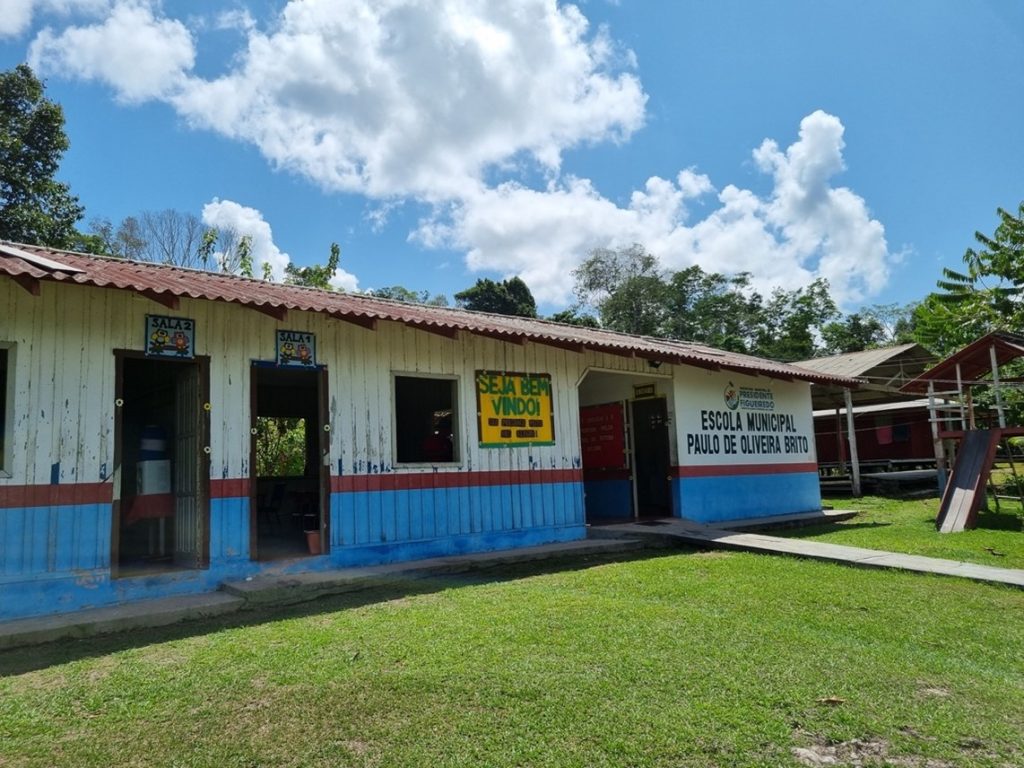
The school at the Macacaboia community
On Tuesday we visit the smaller schools near Porto Morena: Macacaboia and Bela Vista (pictured above). The schools are well-kept with freshly cut grass, recently painted walls, a tap with chilled water, a kitchen that serves warm meals and a group of enthusiastic teachers who want the best for their children. These children range between ages 5 and 15, they often follow classes in the same room and the total group size is about 15. The difference with Maracarana is that in Macacaboia and Bela Vista, the schools are not embedded in a dense community area, but they are standalone buildings on the river shore and all children are brought in by school boat.
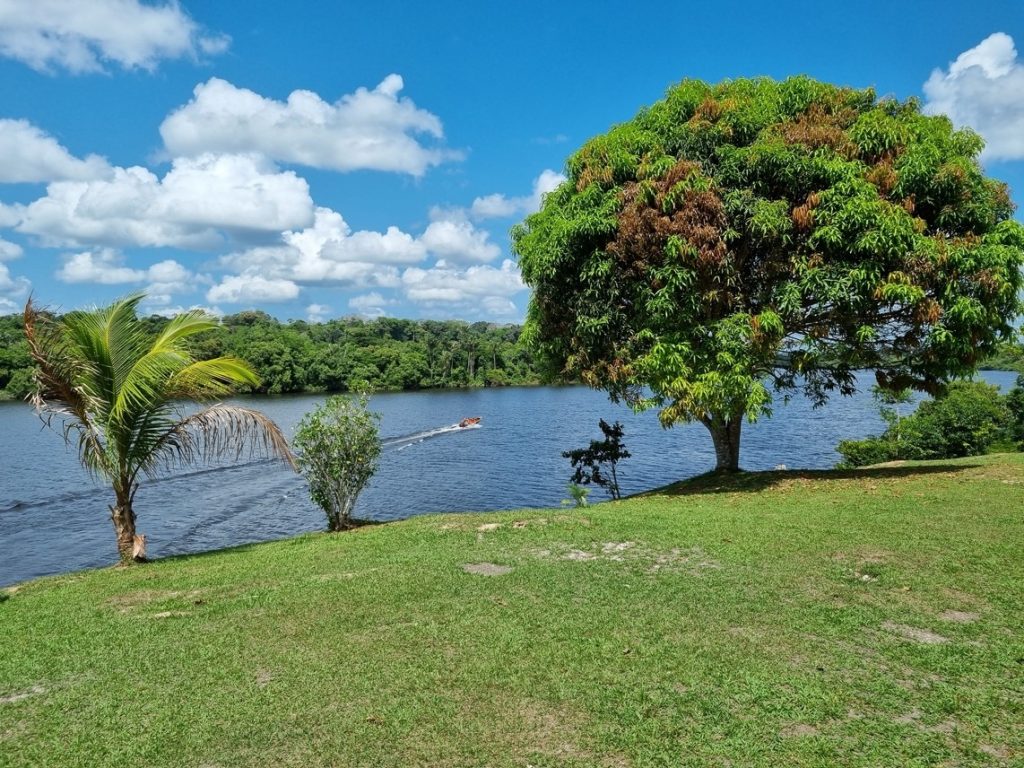
A school boat on its way to transport children to and from school
At all schools, we follow similar programs. We discuss concepts such as temperature, pressure, and water in the atmosphere, and how they lead to cloud formation and rain. And these children do not need to be taught the significance of rain, because both the crops they grow and the level of the river they live on are governed by the tropical showers so characteristic of the Amazon. Last year, the communities flooded when rain storms raised the waters in an upstream reservoir so much that its dam had to be opened. Many families lost their house or their boat. That is, they essentially lost all they own.
While we explore the world of meteorology with the students, Cybelli discusses a future program she envisions for these schools with the teachers. Its aim: to spread knowledge accumulated at ATTO to the surrounding communities. She wants to teach the teachers, spread video lectures to schools that are still disconnected from the internet and give the children mentors at ATTO.
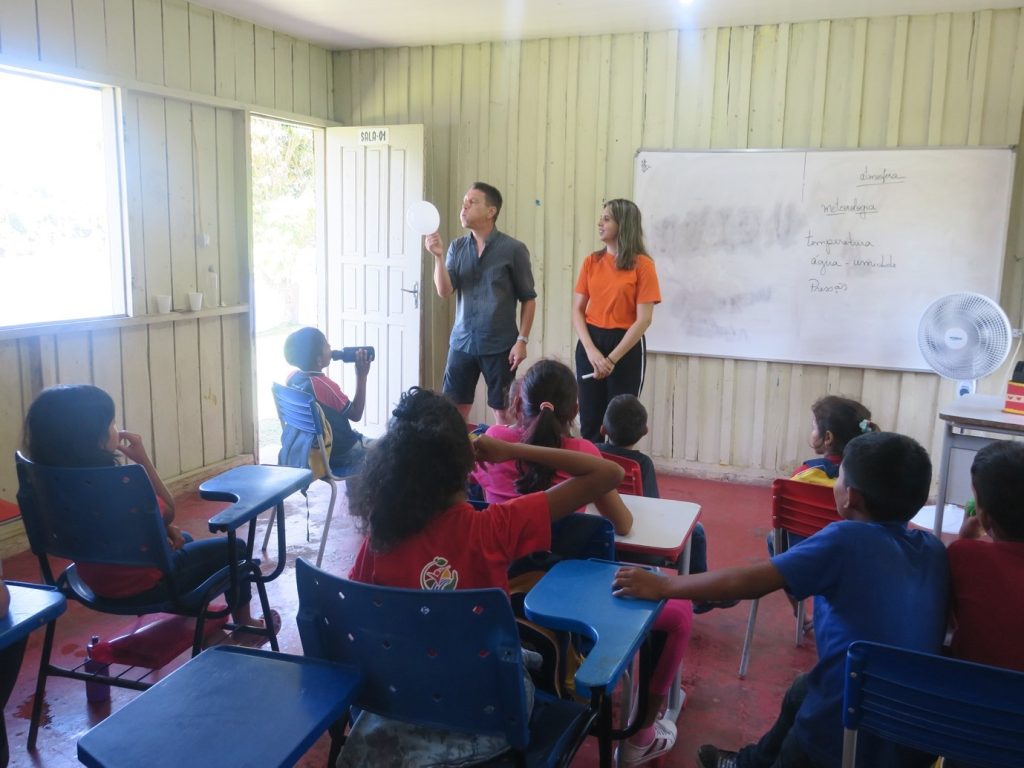
Oscar and Isabella demonstrate the relationship between air pressure and air flows, with the help of a balloon.
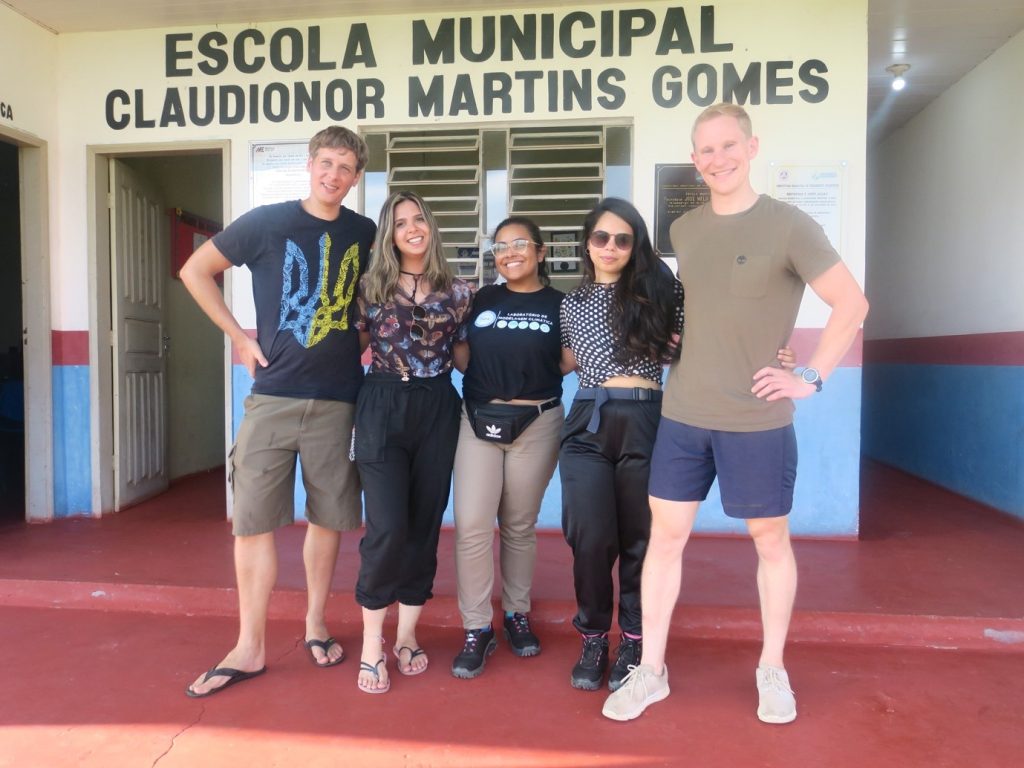
Sipko, Isabella, Ranny, Carla and Martin visited the school in Maracarana.
Such a program is far from a luxury. The communities exist in an area where local government support is scarce and a risk of floods is always present. But this is the area they all know as home. This emphasizes the importance of educating the next generation in these communities; to survive here, they must know how to sustain both themselves and the environment they live in. In the context of deforestation, biomass burning, wood exploration, extreme precipitation levels, it is also important to impress on the young members of these communities the value of the ecosystem they live in is a task whose importance cannot be understated.
So we are encouraged to see most students engage enthusiastically in our discussion, each at their own level. The young children are fascinated by the small physics experiments we perform; they are magic tricks. The larger children understand some of the underlying principles, in spite of the Spanish and limited Portuguese we speak in. All gasp when a cooling beer can implode under the force of atmospheric pressure. We even exchange a few words in English.
We return to ATTO as the sunset paints the river in a million shades of red, with a new, humbled perspective on the importance of embedding the science we do here in the local societies. This grassroots effort is essential if the knowledge gained from projects like CloudRoots is ever to improve the quality of human and natural life.
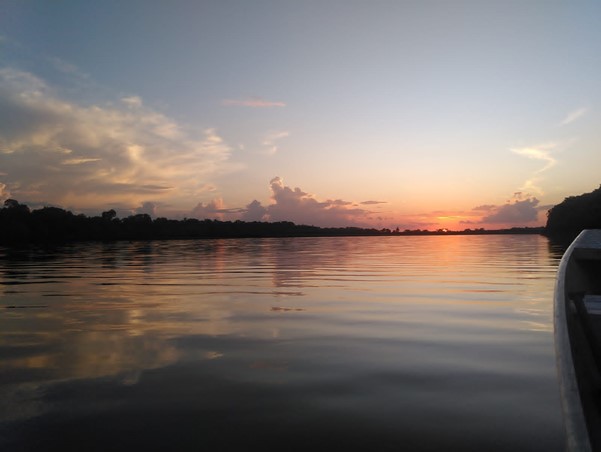
Sunset over the Uatamã river.

